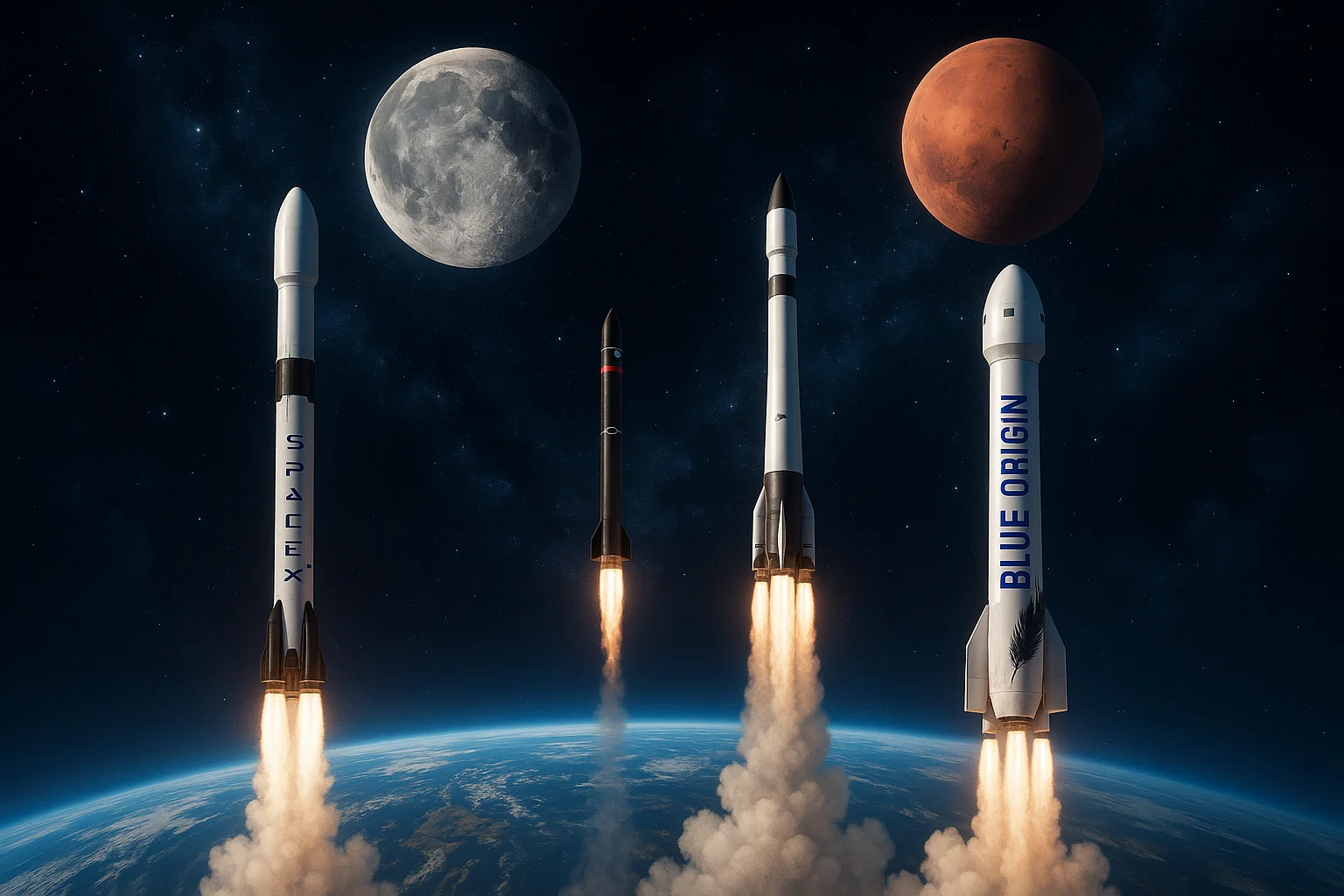🌌 Introduction
The Moon has always fascinated humanity, but in 2025, it’s becoming more than a celestial wonder — it’s an economic opportunity. With new technology and private investments, lunar mining is no longer science fiction. Companies and space agencies are preparing to extract valuable resources that could power spacecraft, build habitats, and even reshape Earth’s energy future.
🧊 Water Ice: The Key to Life and Fuel
One of the most valuable discoveries on the Moon is water ice, hidden in permanently shadowed craters near the poles.
Water isn’t just essential for life — it’s also a source of hydrogen and oxygen, which can be turned into rocket fuel.
If we can mine and process lunar ice efficiently, astronauts won’t need to bring fuel from Earth. Instead, they could refuel on the Moon, making deep-space exploration more affordable and sustainable.
In short: Water ice could make the Moon a cosmic gas station for future missions to Mars and beyond.
⚛️ Helium-3: The Fuel of the Future
Another lunar treasure is helium-3, a rare isotope that could revolutionize clean energy on Earth.
While almost absent here, helium-3 is abundant on the Moon’s surface, deposited by billions of years of solar wind.
Scientists believe it could be used in nuclear fusion reactors — providing massive energy output without radioactive waste. Though practical fusion power is still in development, helium-3 gives the Moon extraordinary long-term economic potential.
⛏️ Rare Earth Metals and Building Materials
The lunar crust contains valuable rare earth elements, such as titanium, aluminum, and silicon, essential for electronics and solar panels. Mining these on the Moon could:
- Support space construction projects like habitats and solar farms.
- Reduce the environmental impact of mining on Earth.
- Supply future space industries with locally sourced materials.
Some researchers even envision 3D-printing habitats directly from lunar soil (regolith), cutting the cost of transporting materials from Earth.
🚀 Who’s Leading the Moon Economy?
The race to the Moon economy is heating up:
- NASA’s Artemis Program partners with SpaceX and Astrobotic to deliver mining payloads.
- China’s Chang’e missions continue to study lunar soil composition.
- Private companies like ispace (Japan) and Lunar Outpost (USA) are developing robotic miners to extract resources remotely.
This blend of public and private collaboration could make lunar resource extraction a $100-billion industry by 2040.
🌍 Economic and Ethical Challenges
While lunar mining offers promise, it also raises major questions:
- Who owns the Moon’s resources?
- How can we prevent environmental damage to the lunar surface?
- Which nations or companies have mining rights?
Currently, the Outer Space Treaty (1967) forbids any country from claiming the Moon, but it doesn’t clearly address private commercial activity. Future space laws will need to balance exploration with fairness and sustainability.
🌕 Conclusion
The Moon is no longer just humanity’s first step into space — it’s becoming the foundation of a new off-world economy.
With lunar mining unlocking water, helium-3, and rare metals, the next generation of space missions could run on resources found 384,000 kilometers away.
In this new era of exploration, the Moon isn’t just our nearest neighbor — it’s the launchpad for humanity’s future among the stars.



